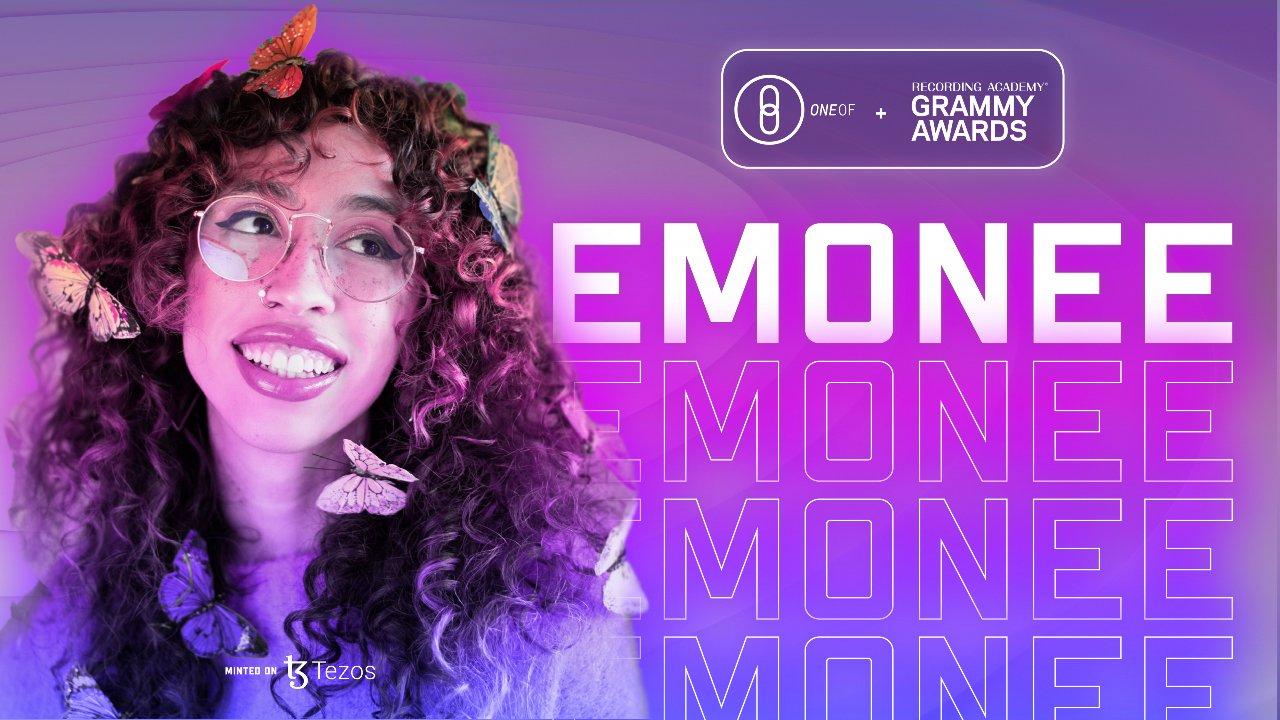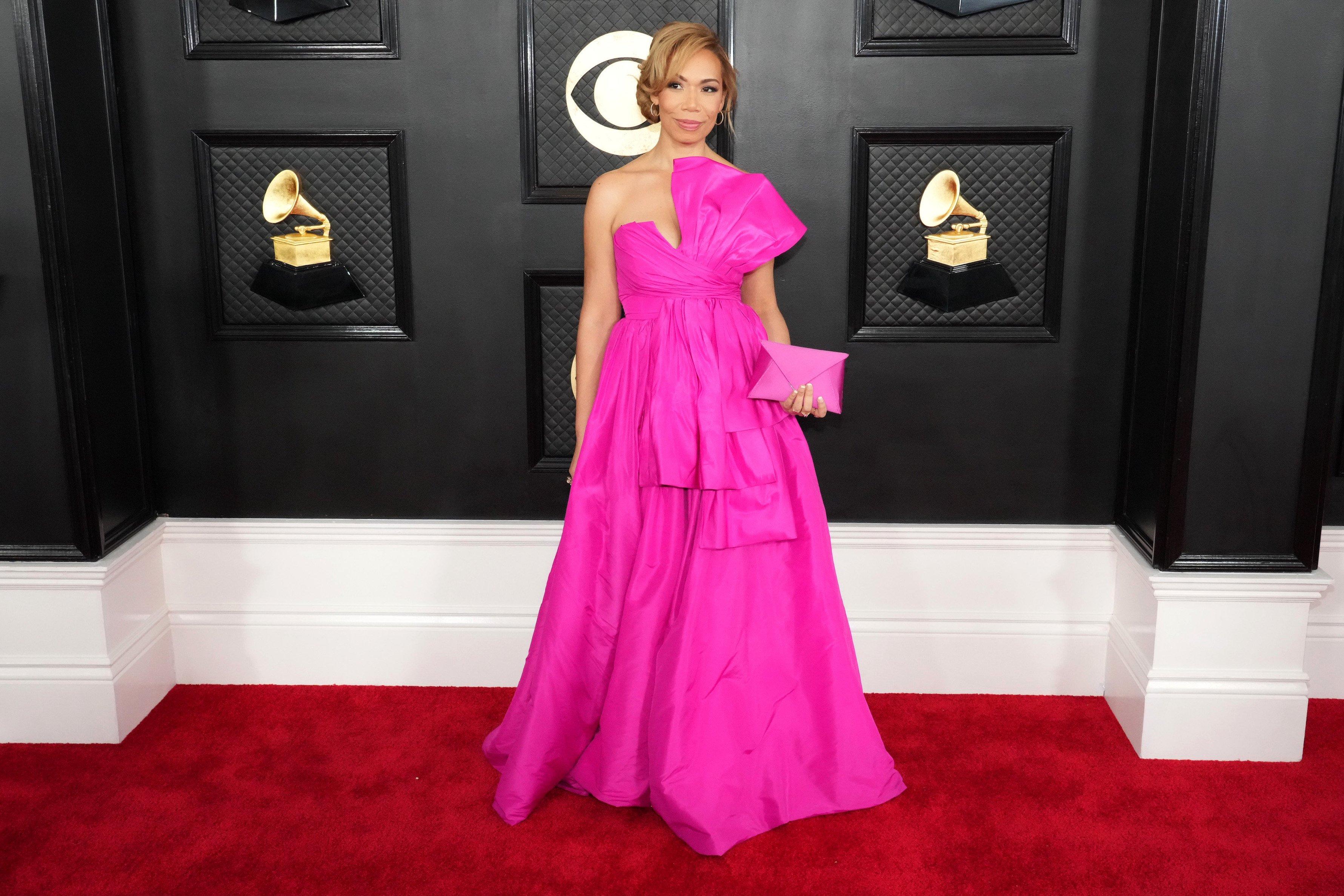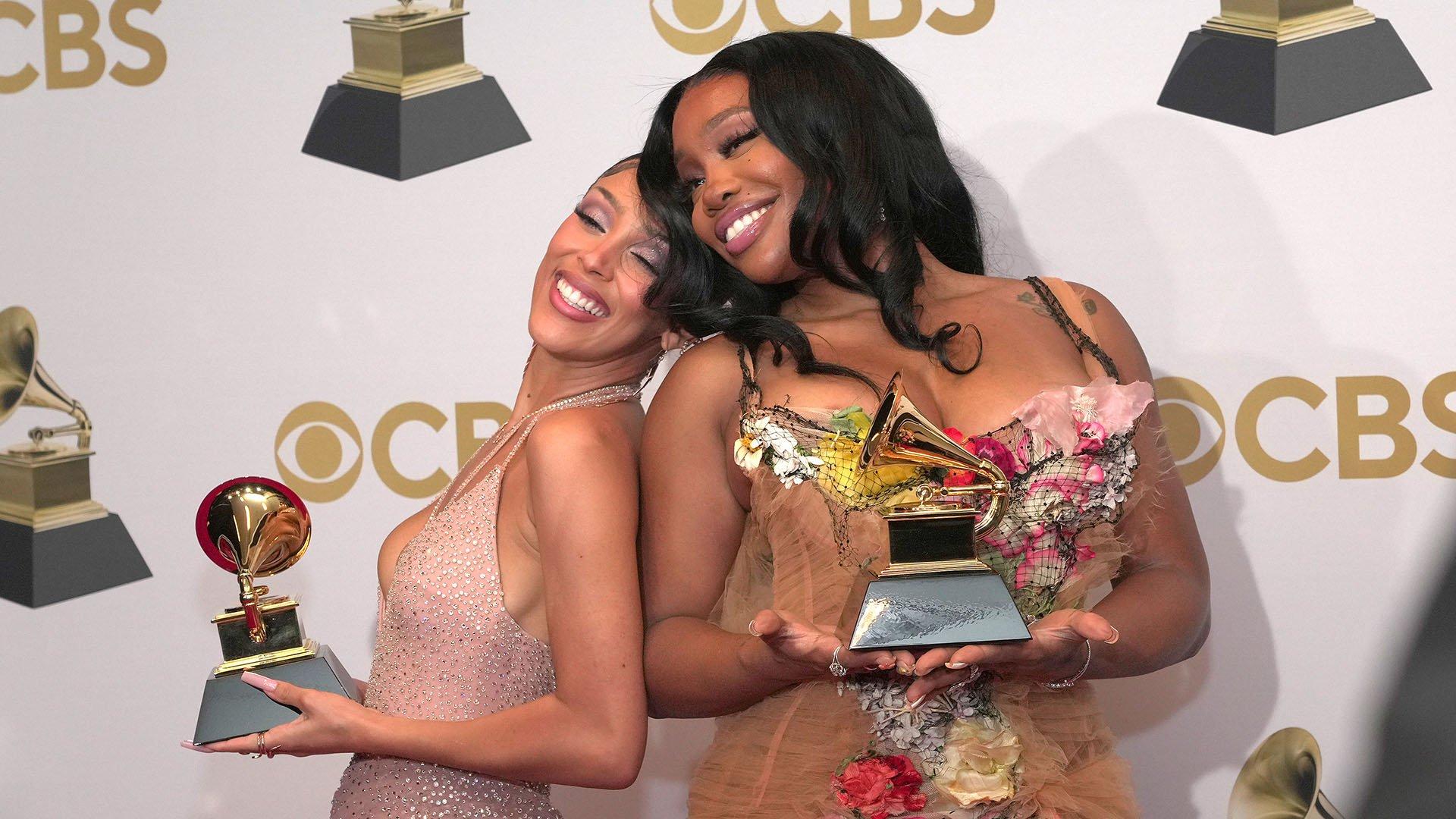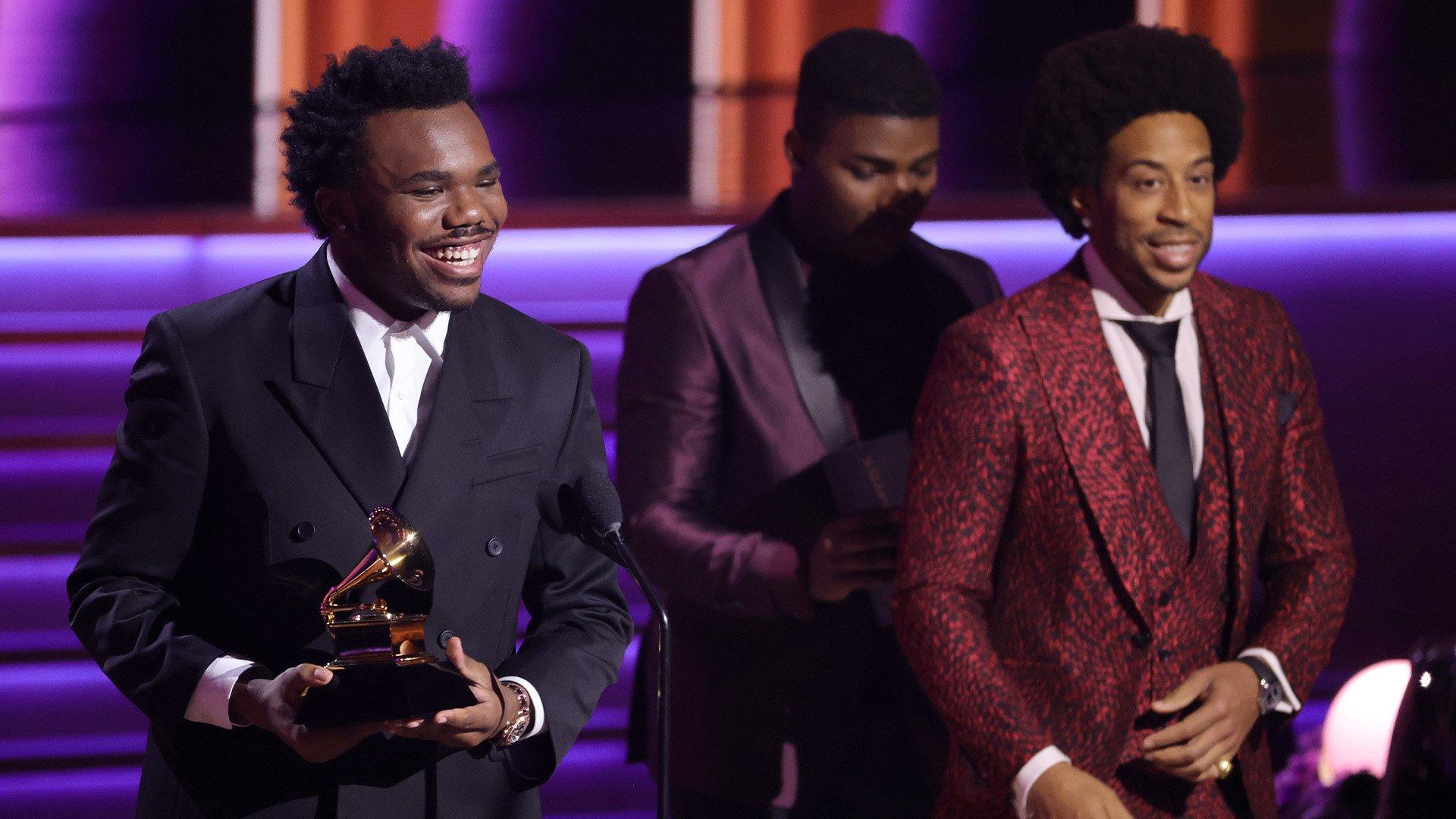Around the time of the GRAMMY Awards in 2021, Emonee LaRussa sold her first NFT. This took the 27-year-old digital artist from Sacramento, California, by surprise. Despite her popular motion graphics work for music and engaging personality on her fast-paced YouTube tutorials, LaRussa didn't think anyone would want to buy a NFT just for the sake of owning her digital art.
One year later, LaRussa was a natural choice as one of three digital artists to create the first NFTs as part of GRAMMYs and OneOf's NFT partnership. The partnership brings together cutting-edge digital artists to the Recording Academy to create NFTs to commemorate the 64th, 65th and 66th GRAMMY Awards. These NFTs are the first time the general public will be able to own a piece of the GRAMMY Awards.
NFTs, or non-fungible tokens, are a way to productize digital files by assigning them a certificate of title. Musicians usually collaborate with a digital visual artist to create a limited edition audio/visual digital object on which fans can bid. Depending on demand, the final bids can be quite high, making NFTs a potentially lucrative source of income.
LaRussa's distinctive animation style lends itself nicely to the GRAMMY x OneOf NFTs. Her characterful, exaggerated figures meld psychedelia with a classic cartoon aesthetic that's buoyed by bright, saturated colors.
Prior to exclusively creating NFTs, LaRussa made music visuals for Kanye West, Ty Dolla $ign, FKA Twigs, Jhene Aiko, and John Legend, among many others. LaRussa became a familiar face to young, potential digital artists of color who saw a possible future for themselves in her. LaRussa also founded Pamanama, an animation studio specializing in music visuals created by a diverse group of digital artists, specifically artists of color.
LaRussa spoke to GRAMMY.com about her trajectory in the digital art space, her nonprofit, JumpStart Designers, and the NFT she created for the 2022 GRAMMYs, officially known as the 64th GRAMMY Awards.
Check out Emonee LaRussa’s 64th GRAMMY Awards NFT design.
This interview has been condensed and edited for clarity.
How did you get into motion graphics?
I initially went to film school for cinematography. But being a hyper-feminine person, wearing dresses and acrylic nails, I encountered so much discrimination. I was constantly being told that the way I looked was unprofessional. It wasn't my work ethic. Out of all the students, I was the only person who was getting straight As and who had a cinematography job. But, I can't be a cinematographer if no one wants to be on my set. It's a very team-reliant job.
I started focusing on motion graphics to add visual effects to my cinematography to boost it up. Motion graphics and visual effects allowed me to be behind the computer, to be someone no one could discriminate against. I honestly feel it was for the better because I love what I'm doing now.
You have won a couple of Emmys; what were those for?
It was when I was working at CBS here in Sacramento. When I first started, I didn't know you could win an Emmy working there. One of the Emmys was for a campaign for a story about these kids who kept getting cancer in Ripon, a county in the area, and how authorities were knowingly allowing chemicals to get in the water and it was killing people. The other one was for a campaign for "Good Day Sacramento" where we did a whole bunch of motion graphics.
How did you go from working in television to music?
I was making fan art while working 40 hours a week at CBS. Tyler, the Creator came out with an album; I'm a huge Tyler fan and I hopped on that instantly.
I made an animation. I … uploaded it literally when I was about to go to work. When I got there, I saw Columbia Records liked it on Twitter. I went out on a limb and was like, "Yo, if you like it so much, maybe you should hire me." I got a message from John Vincent Salcedo, who has worked with Beyoncé and all these big artists. That was a huge thing and I needed to quit my job. He gave me my first big opportunity with Lil Nas X. I made a lyric video for "Panini" and it spiraled from there.
That's all so recent.
I know. When I was working at CBS, the fan art I was making was for very small artists. My first big concert graphic was for the Internet. My heart is attached to them because I said I want to do concert graphics one day, and they said, “Maybe you could do our concert graphics.” This is my eighth or ninth year of doing animations, and I feel like I'm starting to finally see the light at the end of the tunnel.
Read: We're Probably On An Irreversible Course Into The Metaverse. What Role Will Music Play In It?
How did you get into NFTs?
A close friend of mine started posting on SuperRare. I was like, "What is this? People are selling their digital art for crypto? That's so crazy." At this point, I was just making art for Instagram likes. Client work pays the bills, but it's not necessarily the most fun.
I thought I would dabble in NFTs. I made a piece and it got a bid within 20 minutes. I didn't even know why people would want to buy my work. Over time, I started really diving into how huge this is, how big of an opportunity this is, not only for me, but for generational wealth.
What are your thoughts about NFTs as a source of income for artists?
I feel like for such a long time, the traditional art world was the only way to make income as an artist that allowed you to do your own passion projects and not rely on client work. Digital artists relied on big corporations to give them income.
What we've seen is an increase in how much people love digital art. The artistry of visual art is growing with the audience, who [are] seeing a lot of value in the artists. I remember my first art show: Everyone was selling actual art pieces while I was showing my work on a TV and no one could buy it. All you could do with mine was watch it and follow me on Instagram. I made that piece for free. It's so wild to think that's how it was for such a long time. But NTFs opened the door for all art mediums.
Have you found there's a learning curve with NFTs and potential consumers?
Yes, because people have a hard time wrapping their head around a non-physical object. But it's the same as spending $500 on a Fortnite skin, which is also a digital asset. It is definitely a conversation to have with people who are outside of the crypto space and NFT space, to help them understand there's a lot of value in things that aren't physical.
The NFT I did for the GRAMMYs is on the Tezos blockchain. What's cool about that is people can purchase it with a credit card or with crypto. To me, it bonds together everyday people and the NFT space. Right now, it's still pretty separate, but once NFTs become a thing you can purchase on an everyday basis, I can totally see the utility of it long-term.
Your NFT for the 64th GRAMMY Awards is your first commissioned work in a while.
I was really excited about it because it wasn't constrained to any limitations. When I'm given rules, I always feel like I'm not living up to expectations. It definitely took a lot of pressure off of me.
Mine is an eight- or nine-second looping animation with crazy camera movement. I created three different abstract environments, with the only objects being musical instruments with my colorful, psychedelic style. It's great that I have the cinematography background because I look at things through that lens. I'm really stoked with the way it came out.
Your own NFTs aren't tied to a musical artist, which makes the fact that they're selling solely on their artistic value even more amazing.
It's a big opportunity for me. I had been making income through my client work, and the fact that I was making additional income doing NFTs allowed me to do things that I thought would be later goals. It changed my entire life.
I had to find an equal balance between paying projects and rainbow [or passion] projects my entire career. I stopped doing client work entirely, and I'm only doing rainbow projects, which is such a crazy concept to me. One of those is my nonprofit, JumpStart Designers. I started looking into NFTs in January 2021, posted my first piece at the end of February going into March, and I started my nonprofit in June.
What are the goals for JumpStart Designers?
Black and Brown communities aren't really in the digital art space. I think a big part of that has to do with accessibility. One of the main things with JumpStart Designers is to create access for lower-income kids … between 11 and 18 [years old]. The biggest digital artists in the NFT space started when they were 12, 13 years old. It makes sense to provide access at that age. I started when I was 15, but I was making music videos on my dad's laptop when I was 10.
How can a burgeoning digital artist connect with Jumpstart Designers?
They would submit a 60-second video on what kind of art they want to create. That's our easy way of vetting them. Then, based on what type of art medium they want to do, we would provide them with the equipment specific to that. We would also provide curated playlists of YouTube tutorials. Our goal is to not only give them the access to equipment, but the education as well.
In the future, we want to build our own classes that would be completely free to them. It would be all of my artist friends that have blown up. Representation is so huge and it's a big part of why I wanted to do YouTube tutorials myself. When I was coming up, all I was seeing was the same people doing the same tutorials. I wanted to come in and be hyper-feminine and show my curly hair and my brown skin and say, "Look, you could do what I'm doing and I want to teach you everything."
2022 GRAMMYs Awards Show: Complete Nominations List





